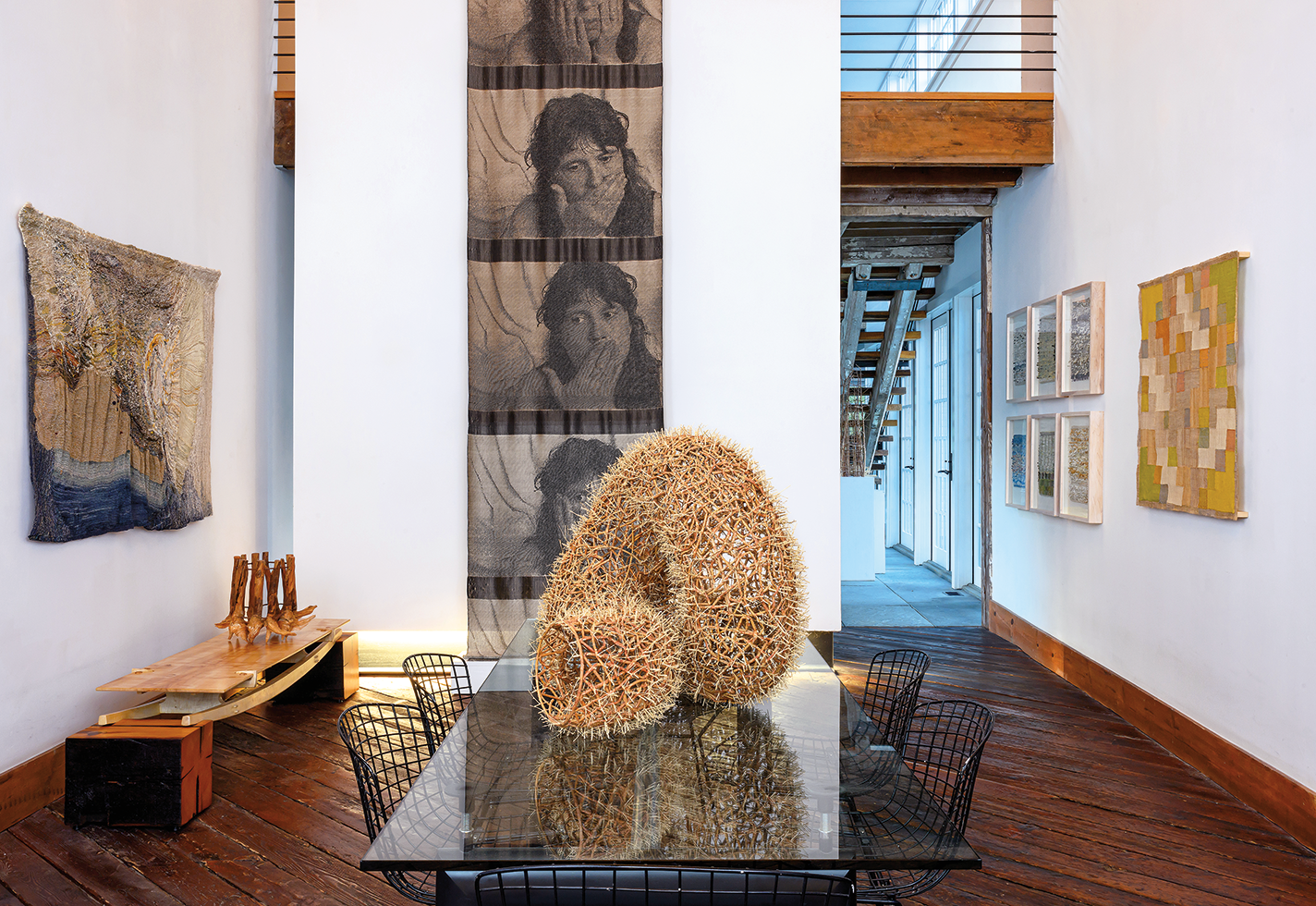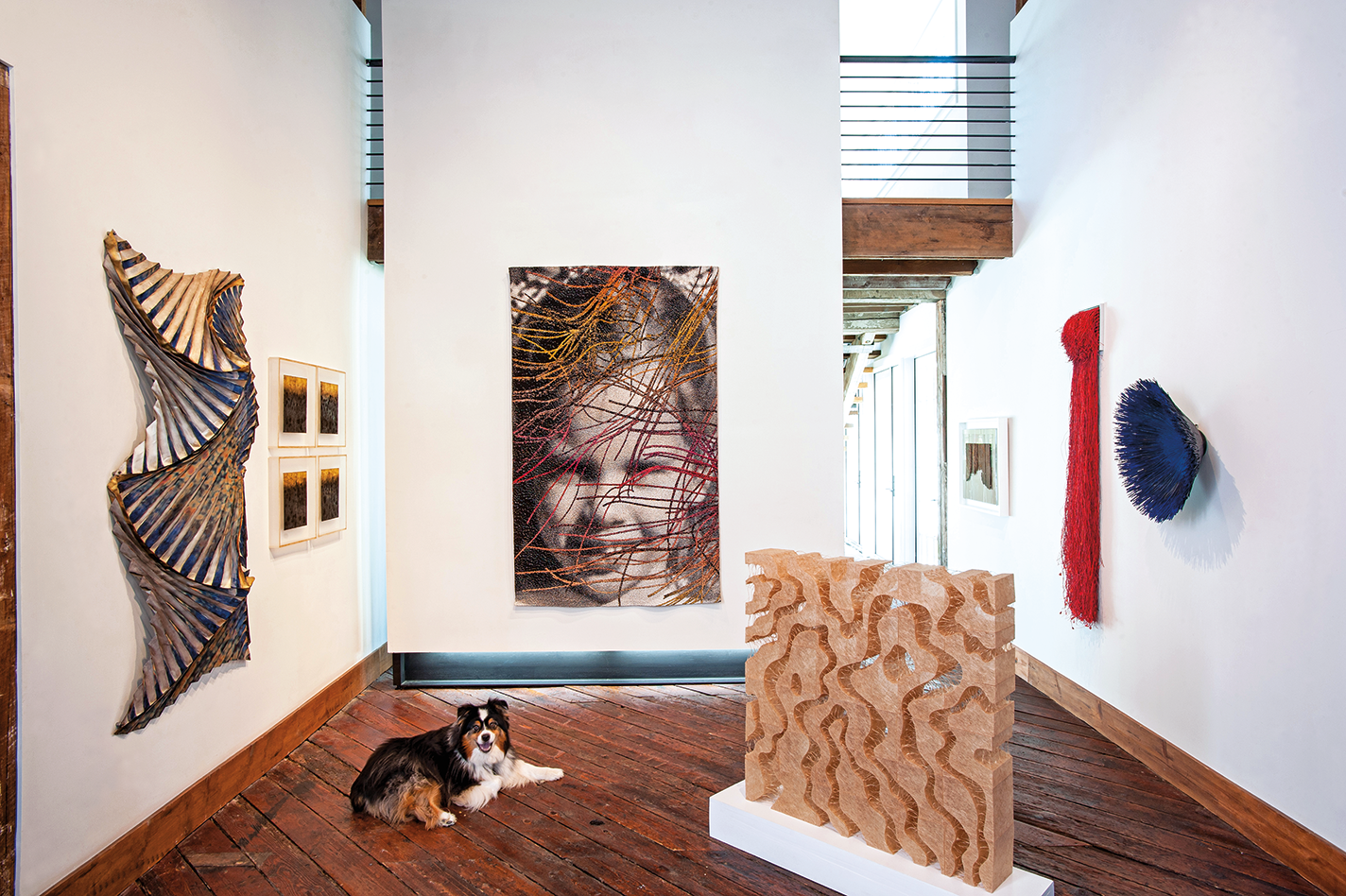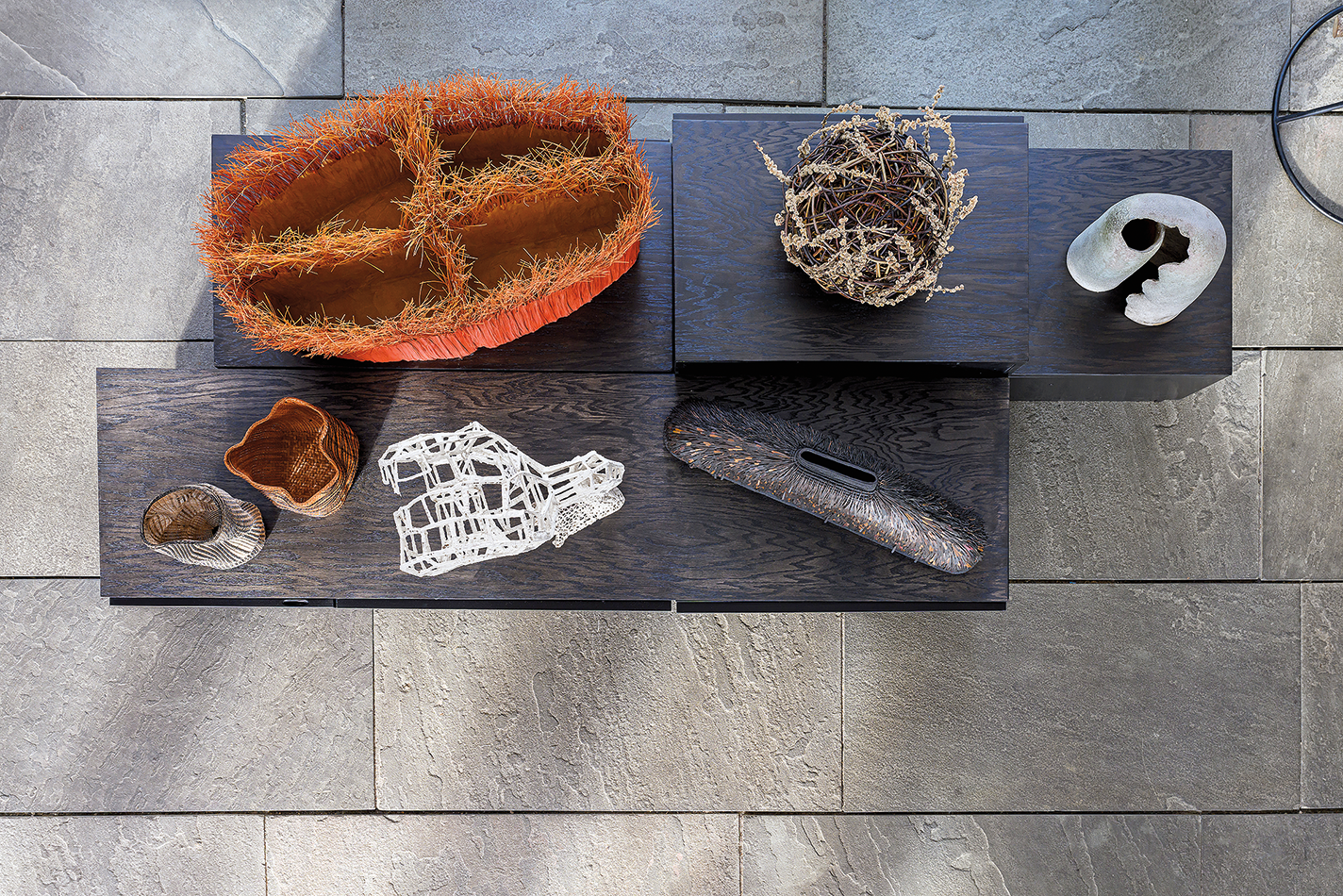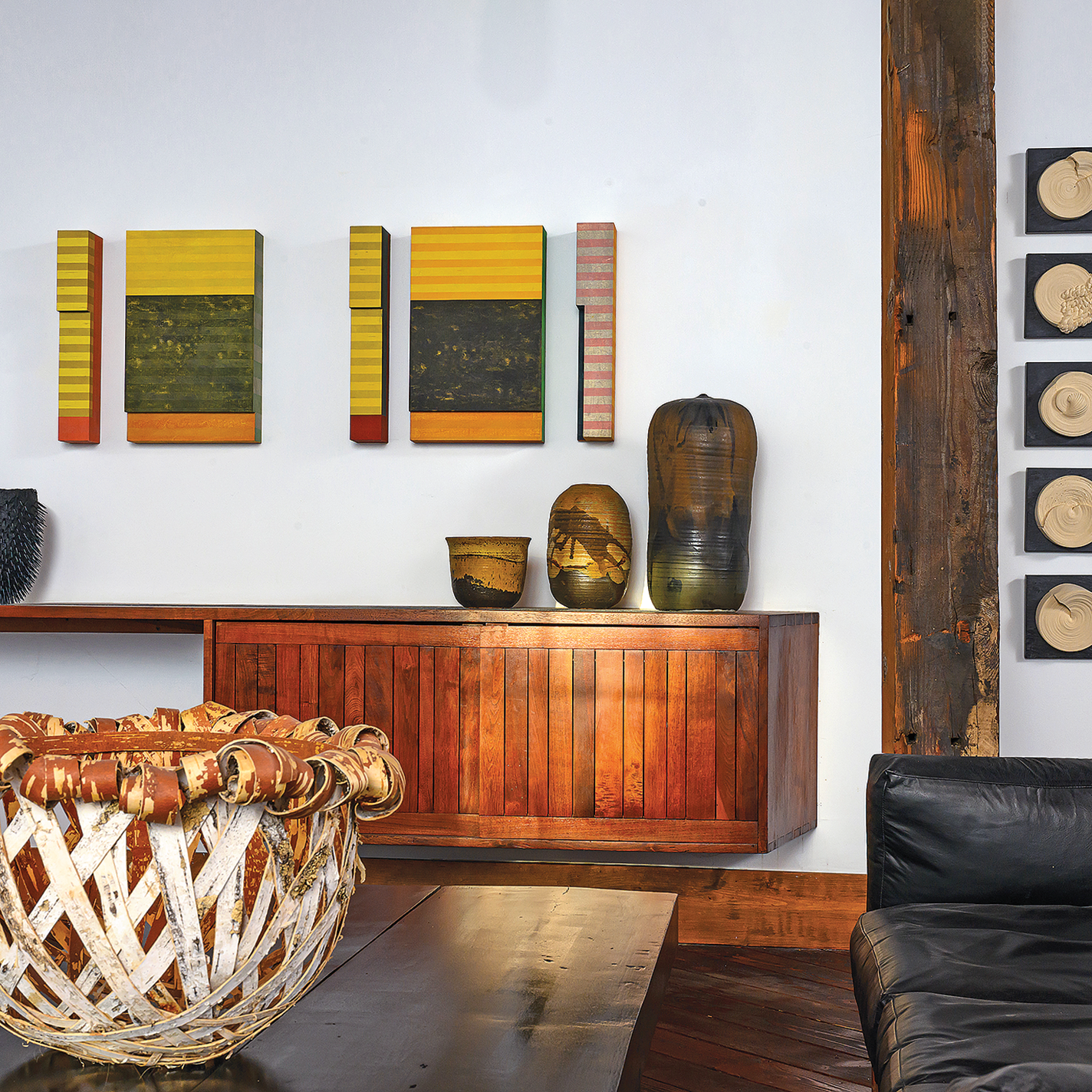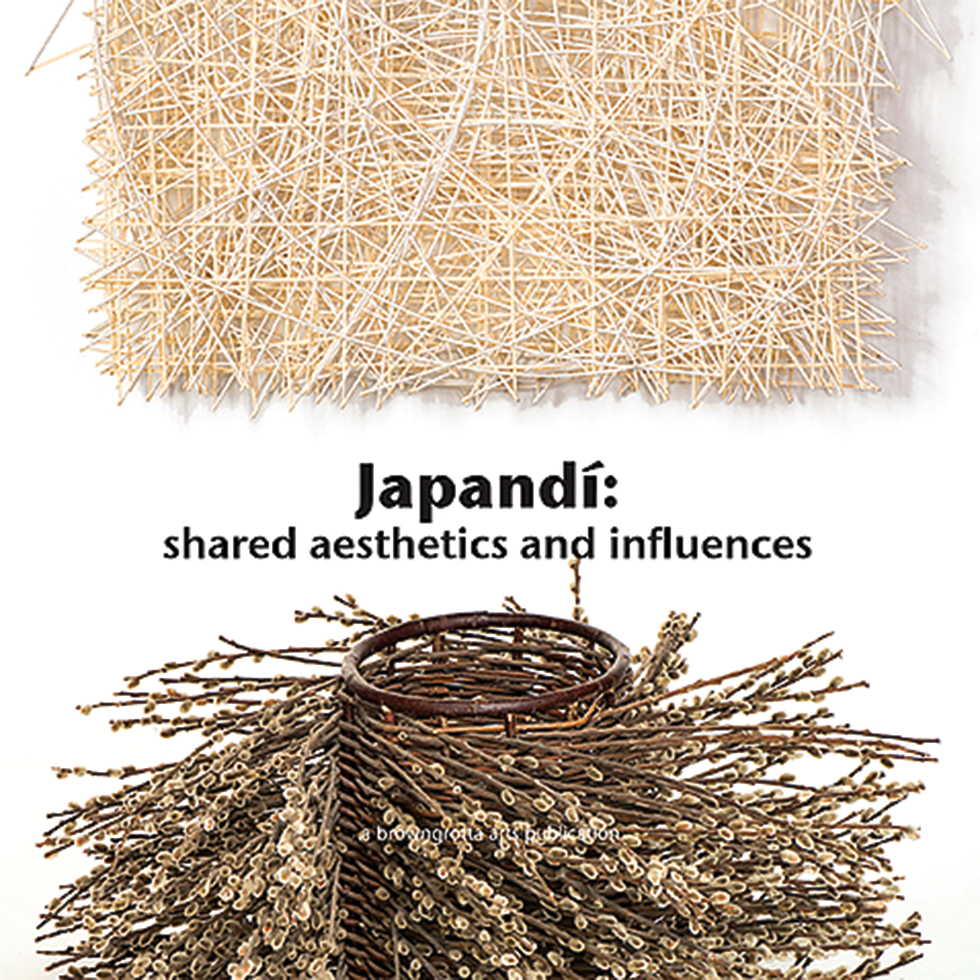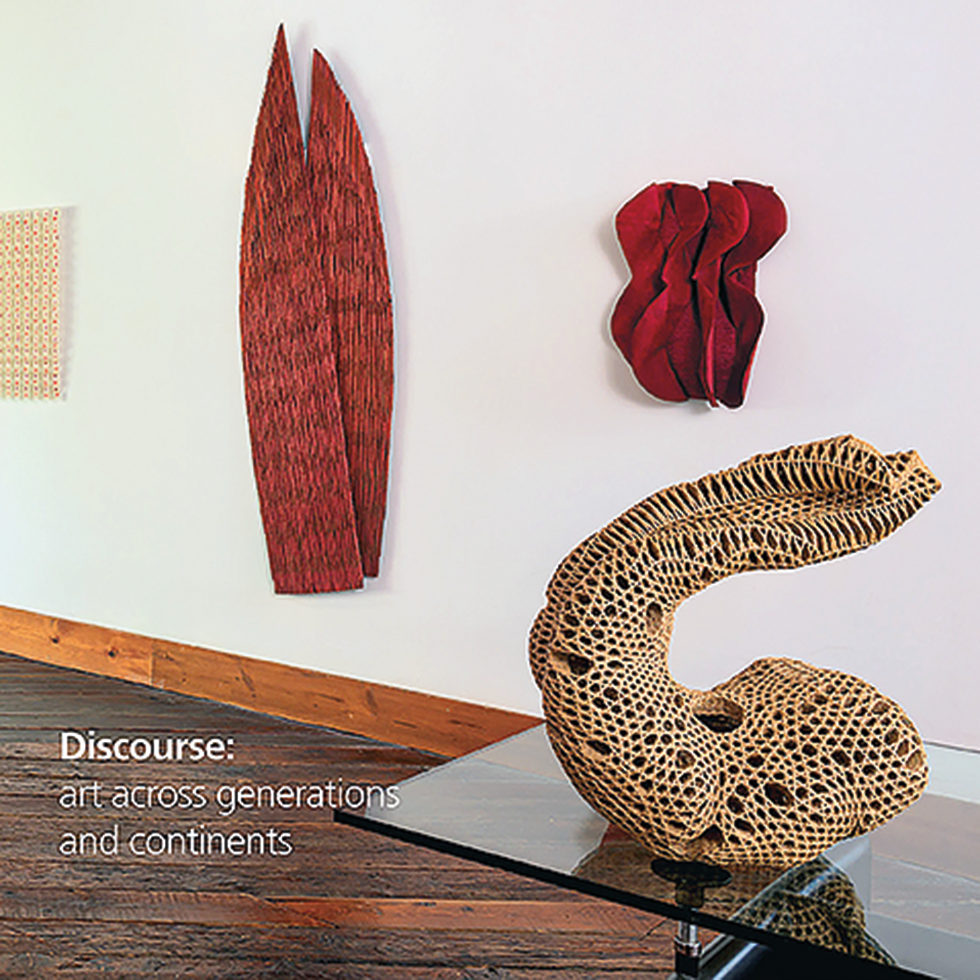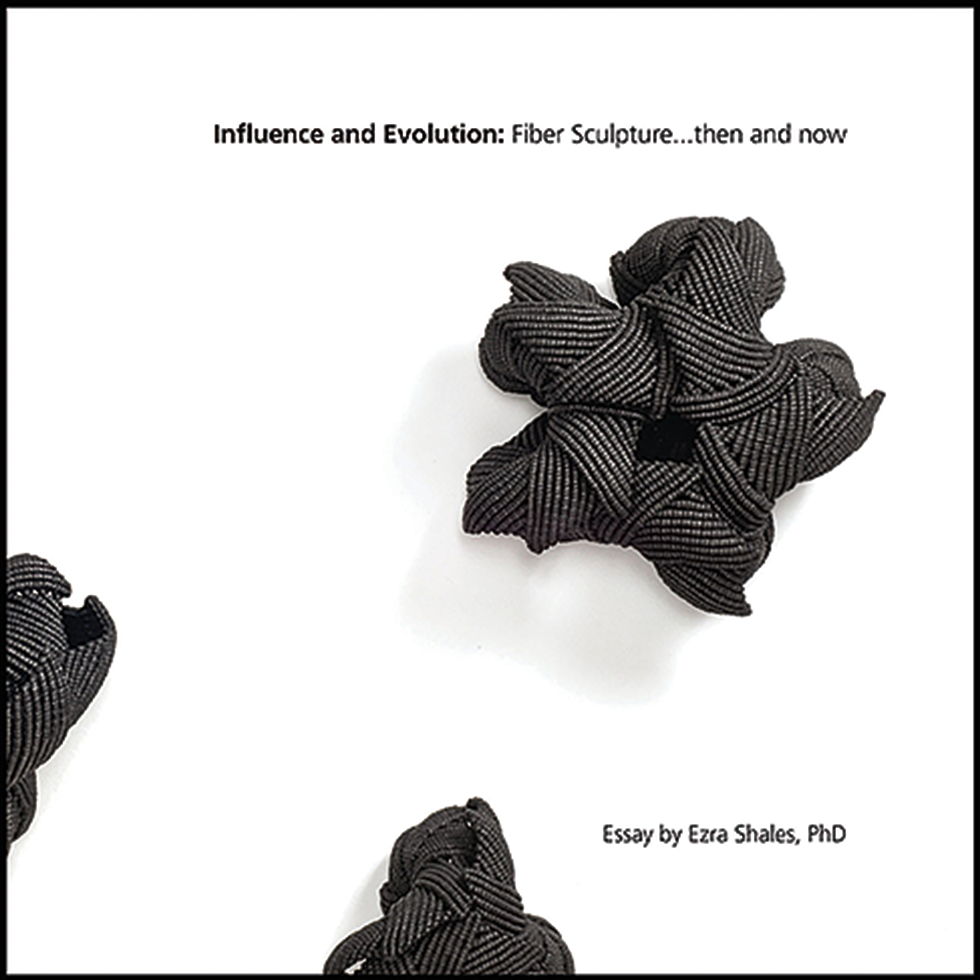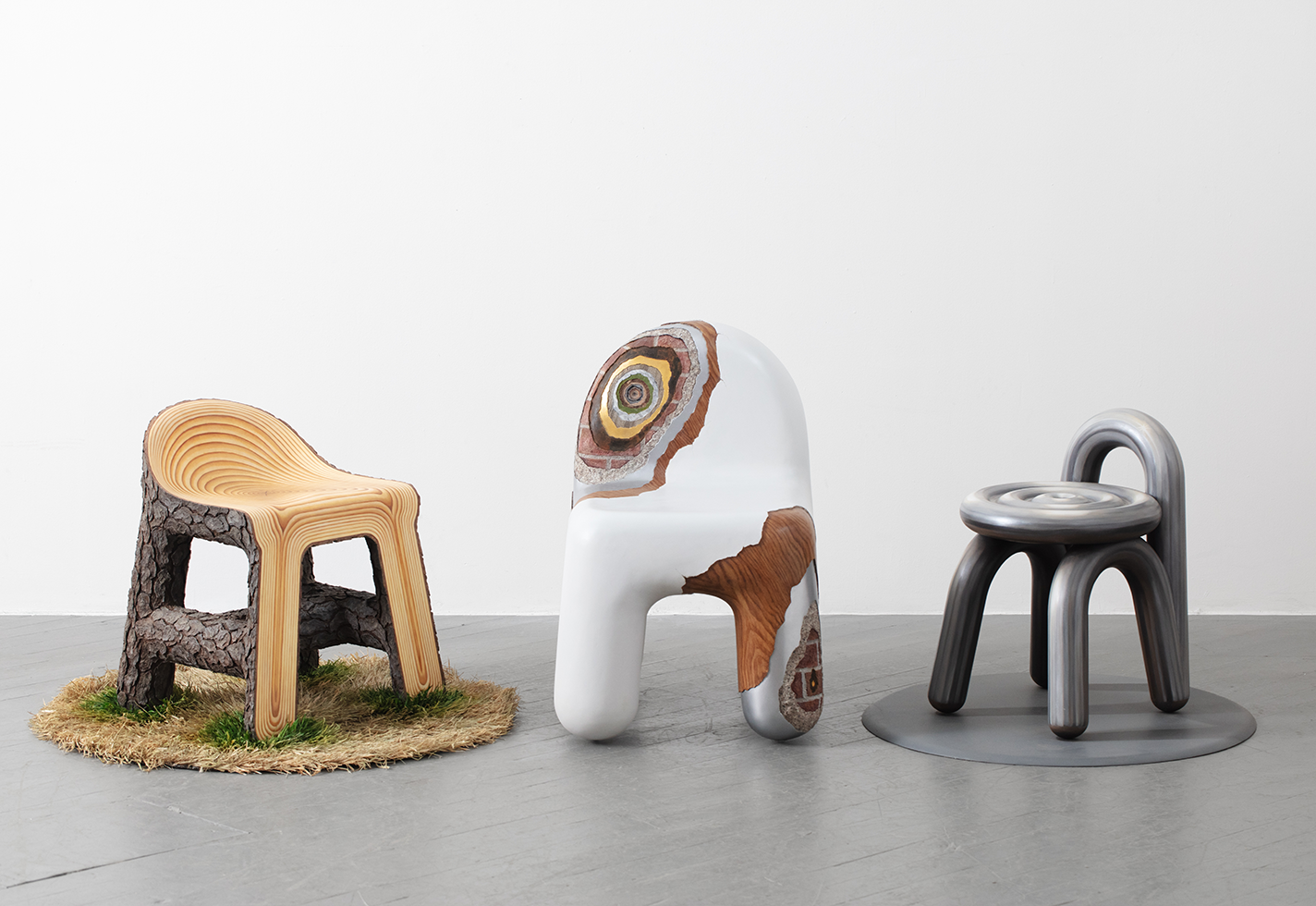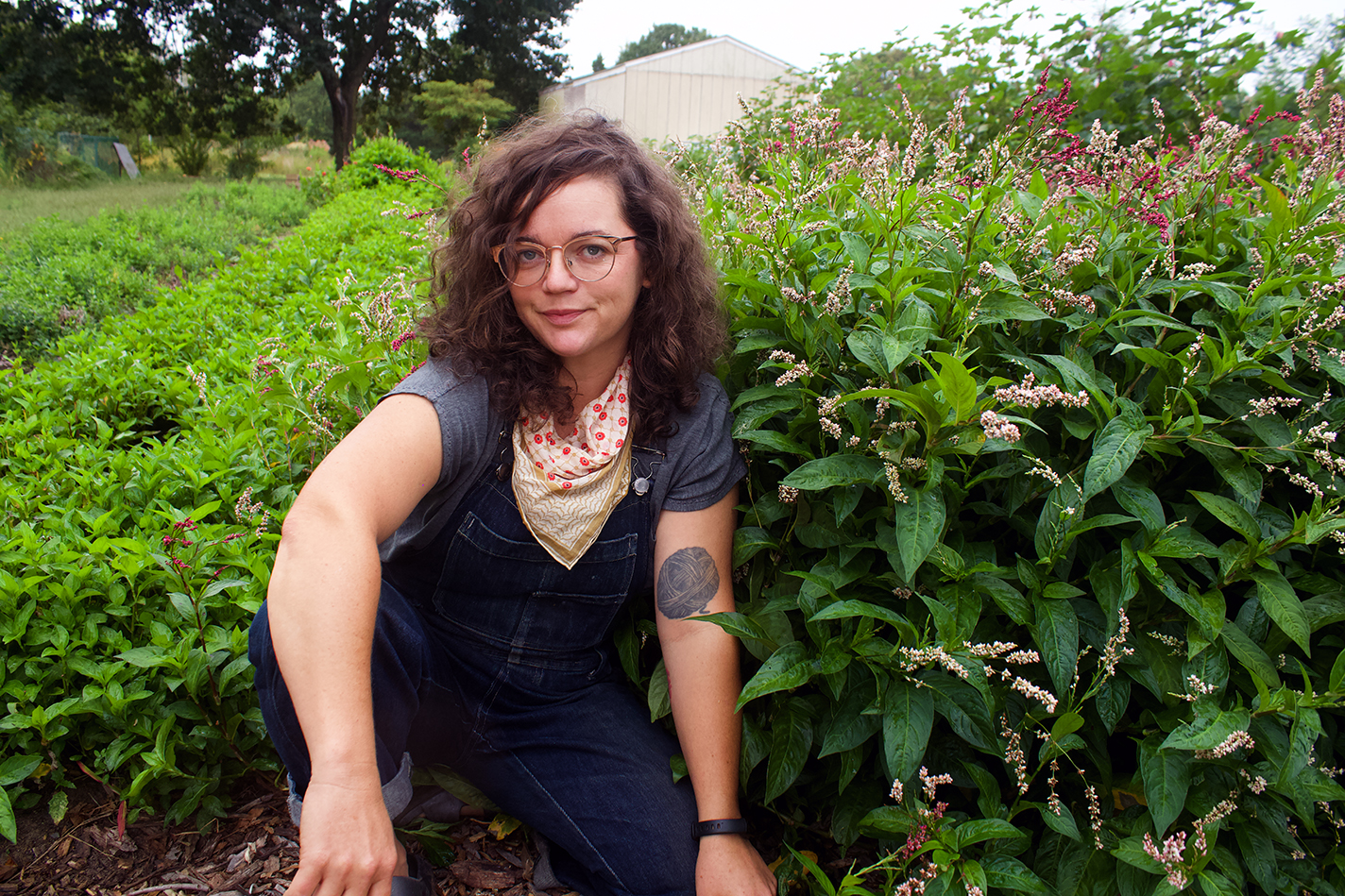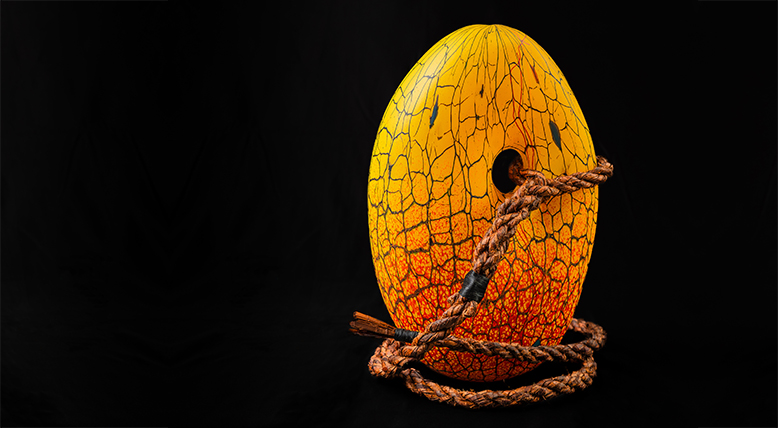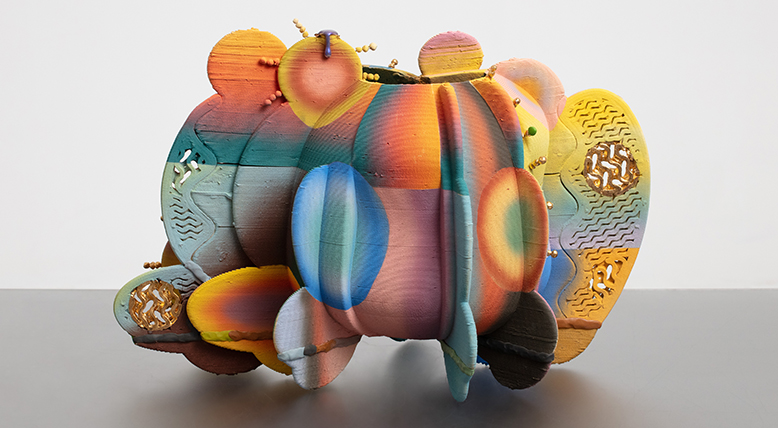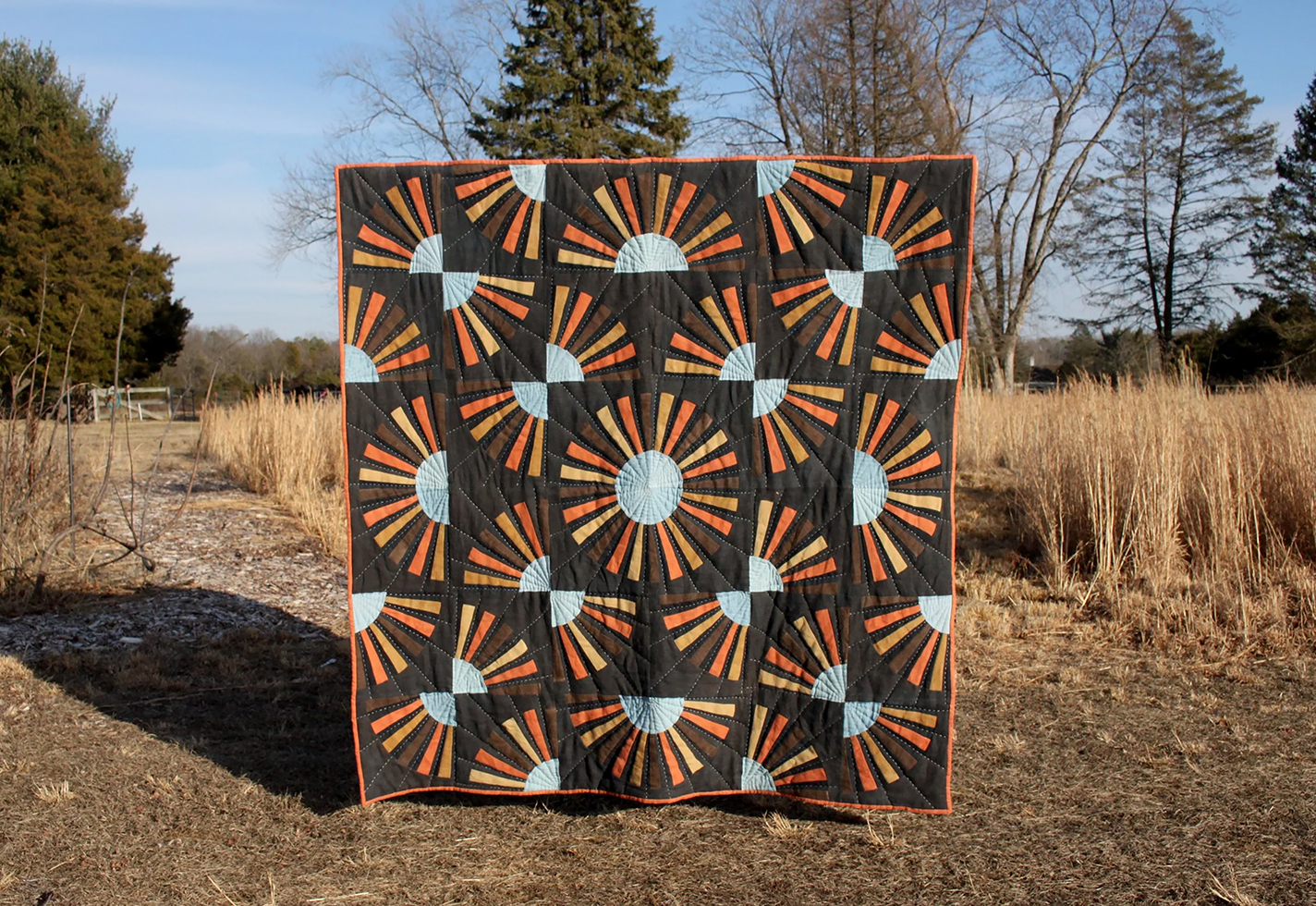Every spring and fall, collectors, makers, and admirers of contemporary fiber art flock to a converted 19th-century horse barn in Wilton, Connecticut, to view works wrought from an impressive range of materials, such as wicker, wood, wire, metal, linen, yarn, plastic, pussy willows, horsehair, hemp, felt, fiber-optic cable, silk, string—even subway tickets. For almost four decades, Tom Grotta and Rhonda Brown of browngrotta arts have woven their passion for fiber art from a “side hustle,” as Grotta describes it, into an international hub for the curation, documentation, and exhibition of sculptures, tapestries, baskets, and other objects created by masters of the craft. As Glenn Adamson exclaimed, “This gallery in a quiet corner of Connecticut operates on a cosmic scale.”
When Grotta and Brown mounted their inaugural weeklong show back in 1987, museums were still relegating textiles to the decorative arts departments, exhibition catalogs were rare, and the photography was flat and lifeless. “So we sort of fell into doing something we thought we could do well and do differently,” says Brown, who at the time was on her way to becoming an attorney, while Grotta, a professional photographer, worked in advertising. “To this day, a big draw for artists is the care we take in depicting their work,” explains Grotta, who shoots all of the lush, tactile, and warmly lit images for the gallery’s publications and website—a rich repository of information about the 100-plus artists they represent, and scores more.
Some 60 shows and catalogs later, the couple’s division of labor remains intact: Grotta handles the visuals and Brown oversees the editorial side. But they are united in what moves them. “You could describe our ideal aesthetic as ‘Japanese-Scandinavian,’” says Brown, “which to us means natural materials, a neutral palette or primary colors, mostly abstract, and a deep commitment to technique.” One of their most popular shows, Japandí (2022), presented artists from the two geographic regions, while a recent collaboration with the Wayne Art Center in Pennsylvania—Japandí Revisited—featured newer works by many of the same makers.
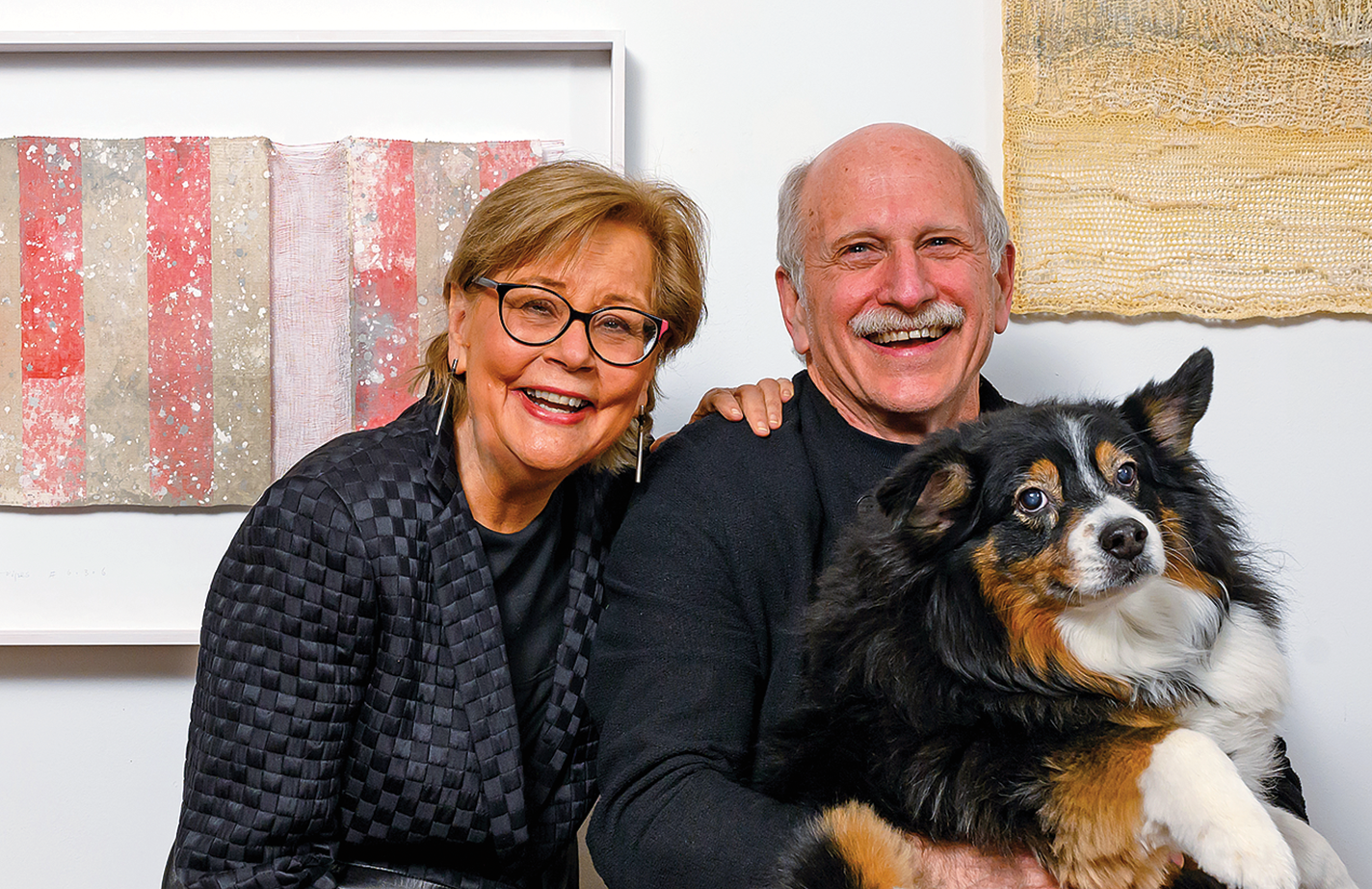
Rhonda Brown and Tom Grotta with their dog, Cassidy.
